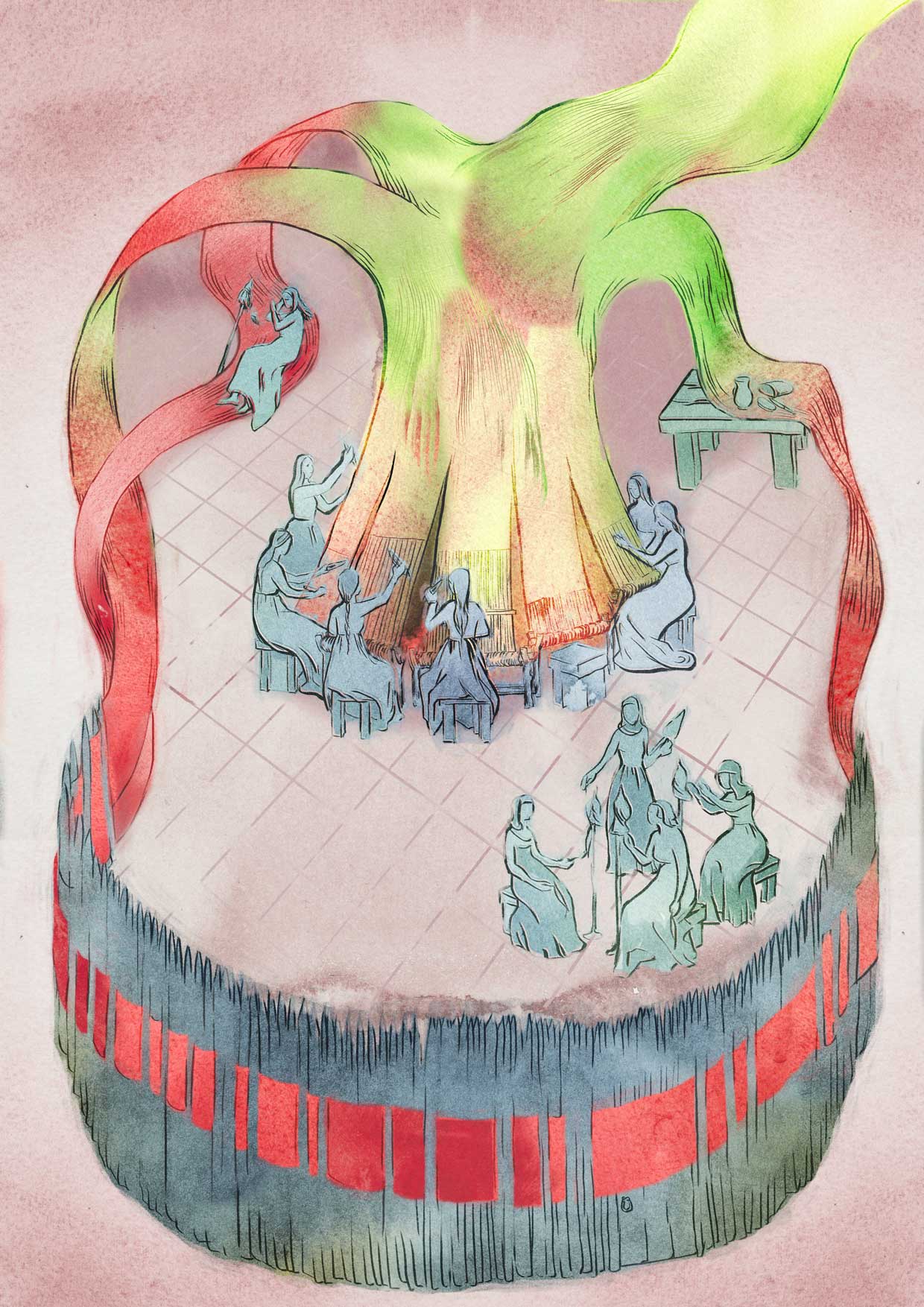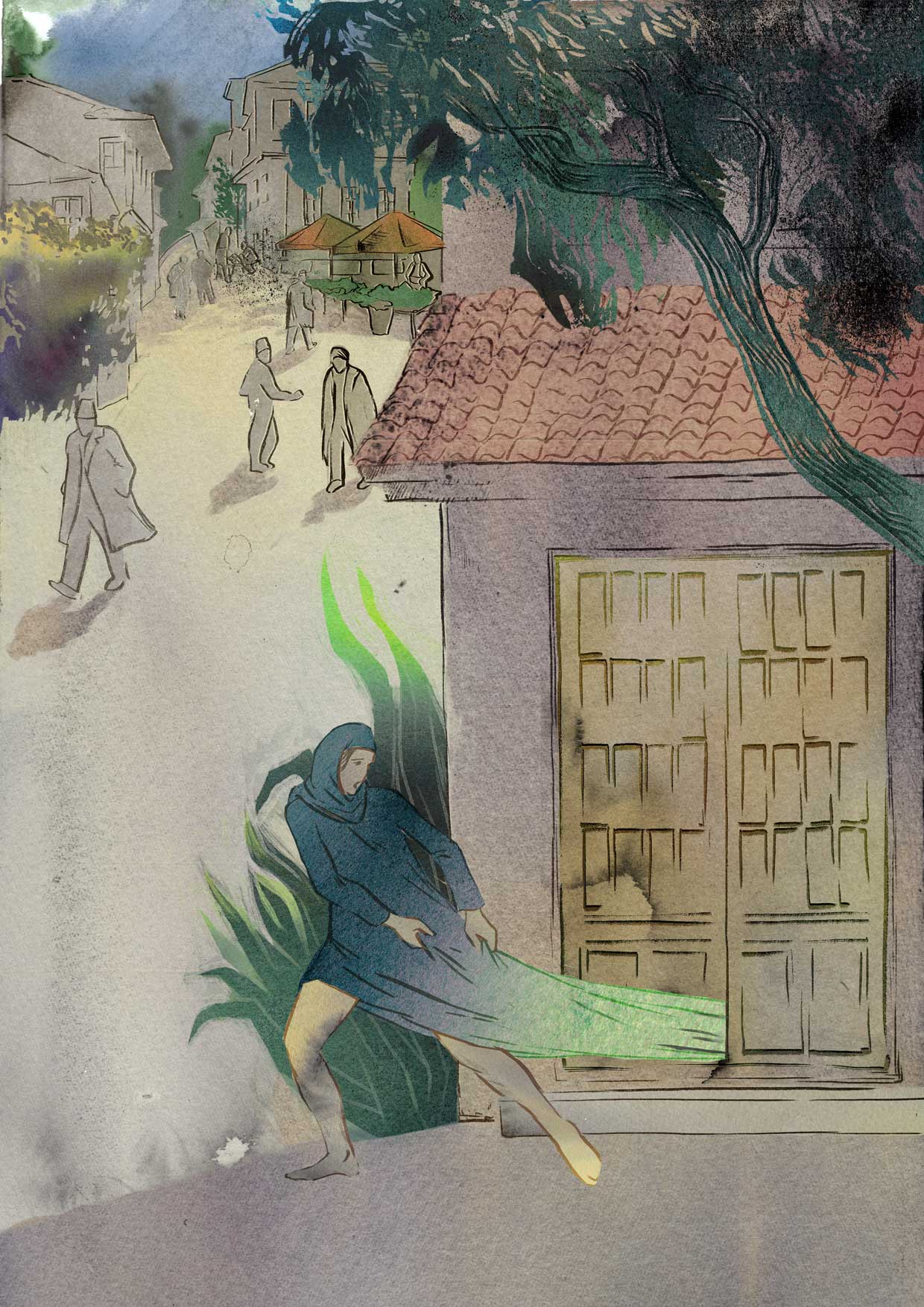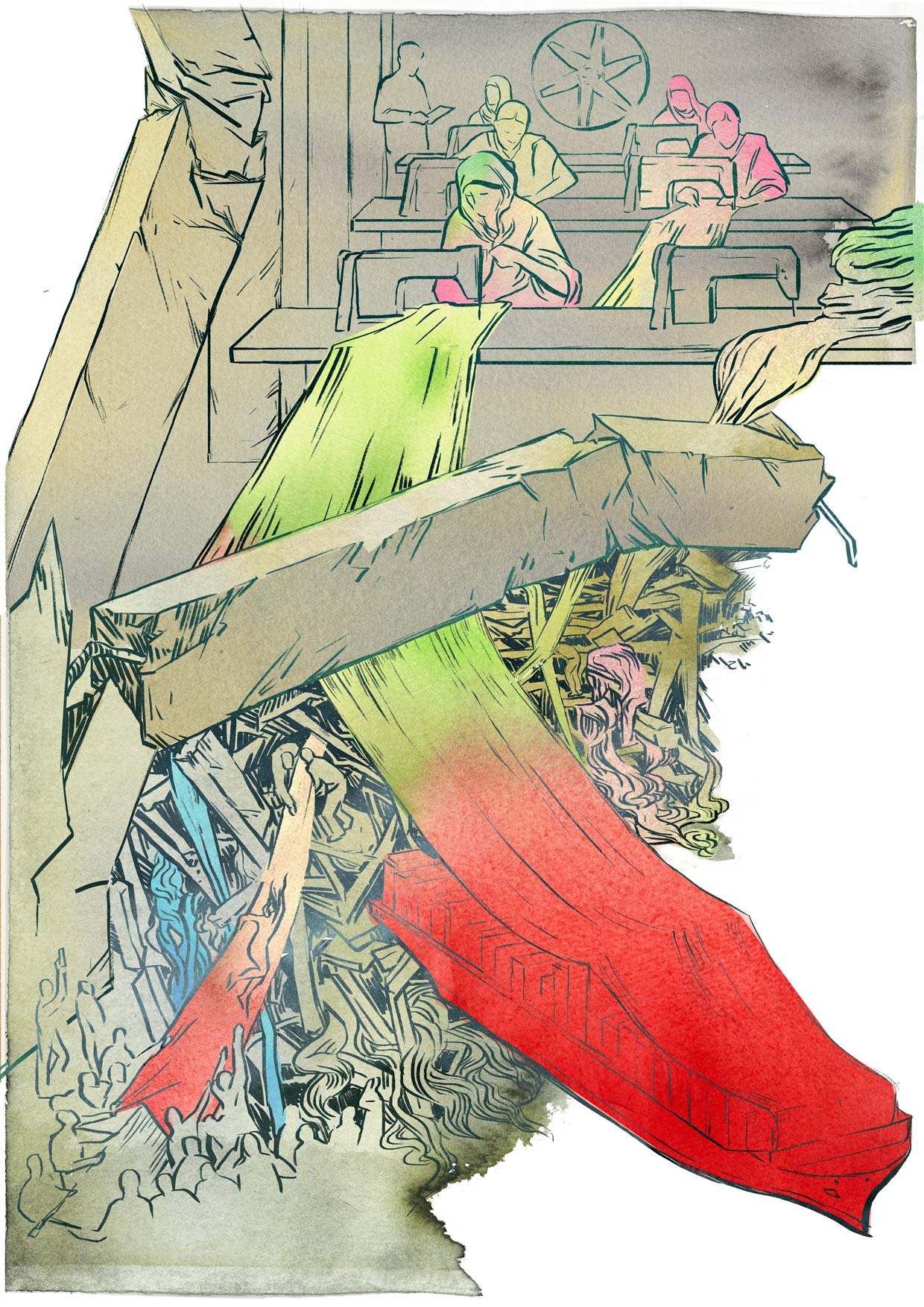Colin Arnaud “Subdued wage labourers: Cases of ambiguity between wage labour and coercive labour in textile production in Western and Islamic medieval sources”
This chapter explores medieval labour relations that combined forms of wage labour and coercion. Based on three case studies, it advances the claim that remuneration could facilitate punishment, enhance coercion, or work as a means of control. In an episode of the Deeds of the Abbots of Sint Truiden (1135), male weavers were forced to perform humiliating Sisyphus work. As wage labourers they depended on the favor of the authorities and could not risk to jeopardise their already precarious situation by resisting. In Yvain (1180), Chrétien de Troyes narrates the fictive case of 300 captive girls who weaved silk cloths. The lord who held them hostage forced them to work but at the same time remunerated their work. Since the remuneration did, however, not cover the high costs for subsistence, the girls effectively ended up indebted. The last case concerns the labourers of the so called tiraz factories producing exclusive clothes for the Islamic courts. The Persian traveller Naser-i-Khusraw (1003-1088) tells that the cloth producers in Tinnis (Egypt) worked with pleasure for the sultan because of the fair remuneration. According to Egyptian administrative tractates from the 12th century, the work of the embroiderers
was controlled attentively only at the end of the process. Yet, if the quality of the cloth was not suitable, the controllers required the workers to pay a fine. Being essentially subcontractors with their own responsibilities, the embroiderers of Egyptian tiraz workshops were extremely susceptible to strict or arbitrary mechanisms of control. Counting on historical and fictitious sources, these different cases of textile workers
discuss the relation between remunerated work, coercion, and exploitation in the medieval world.
Gabriele Marcon “Money for nothing, working for free? Wage labour and coercion in the Medici silver mines”
In the early modern period, miners carried out a wide range of labour activities in the underground
and on the surface. Labour relations implemented to perform mining and metalworking tasks outlined a multi-layered and ever-changing context of remuneration. Cringed into shafts and tunnels, or crowding washing plants and smelting workshops, female and male labourers’ wages were determined through time shifts and collective piece rates.
Moreover, by discovering new deposits miners were granted mining rights and figured as self-employed labourers. Mining statutes issued by territorial rulers in German-speaking mining sites were considered the most sophisticated and efficient in regulating social and economic entanglements embedded in the context of mining labor. Although significant differences emerged between these regulations across early modern Europe, policy makers adopted similar forms of labour organisation and wage regimes by issuing mining laws inspired by German mining customs. This chapter unpacks wage labour in the Medici silver mining enterprise in mid-16th-century Tuscany. From 1542 onwards, the Pietrasanta mines employed German-speaking miners from Tirol and Saxony and workers from nearby villages. Mining laws issued in 1548 sought to organise labour and outlined a wide array of timely, piecework, and self-employed wage regimes. However, ducal economic interests and the increasing use of time-waged labour led to a progressive marginalisation of miners’ initiatives and engineered coercive elements in local workers’ labour relations. Gradually, policy makers relegated miners to a salaried workforce and implemented forms of immobility affecting local and foreign miners.’
Müge Telci Özbek: “Entangled dependencies: Domestic workers in late Ottoman Istanbul (1900–1914)”
This study focuses on girls and young women, mostly from rural Anatolian towns and villages, who served as
domestic laborers in well-off households in early-20th-century Istanbul. Drawing on snippets gleaned from petitions, labour contracts, and
police files, it aims at revealing the continuum of power that these women had to navigate, beginning with the patriarchal dynamics of their
own families, to the class and socioeconomic divisions that defined relations with their employers, and the political and legal authority that urban police wielded. Ultimately, this chapter shows how these dynamics came together to produce a system of domestic labour that was coercive and controlling. For example, readers meet Emine, a young woman from Ereğli, whose father contracted her out for domestic service in the household of İshak Cevdet Pasha. According to records in the police archives, Emine responded to this labour arrangement in a variety of ways, including by running away from her employer’s home three times. This account and a number of other archives explored make the claim that girls and young women from poor rural communities were manipulated and/or forced by their families to leave home for Istanbul, then locked behind the walls of wealthy households to serve without regular compensation and with no legal recourse that would allow the option of leaving freely, if they chose to do so.
Mohammad Tareq Hasan: “Solidarity in flux: Cultural discourse, coercion, and resistance in the garment factories of Bangladesh”
In November 2012, a factory fire killed about 120 workers of the Tazreen Fashions in Dhaka. Soon after, in April 2013, the collapse of the Rana Plaza killed about 1,200 workers. These two tragic events resulted in national protests and raised international awareness of the working conditions in Bangladeshi garment factories. Nevertheless, more than four million workers — 70% of whom are women — are still suffering low remuneration, irregular payment, long overtime work, tight working schedules, restricted leave and benefits, and little ‘collective bargaining’ opportunities. In response, garment workers, despite being of different age groups and rural origins, and possessing diverse geographic mobility, are joining forces in ‘covert’ and ‘overt’ resistance. Therefore, garment industries provide an ideal setting to understand how new forms of ‘solidarity’ and ‘coercion’ appear around the linkages with global capitalism and neoliberalism. Studying these types of responses reveals a number of discourses which are partly in tension with one another and in which workers alternately emphasize different
ideas about work and labor conditions. For instance, discourses of the ‘patron-client’ relation between owner (malik) and workers can determine how the workers respond to coercive working conditions; notions of ‘sisterhood/brotherhood’ impact solidarity and possible collaboration among
workers. As the ethnographic findings of this chapter suggest, resistance to coercive work and solidarity on the factory floor remains conditional and highly dynamic, and labor relations in Bangladeshi garment factories are intertwined with a variety of social relations and cultural-moral discourses.




